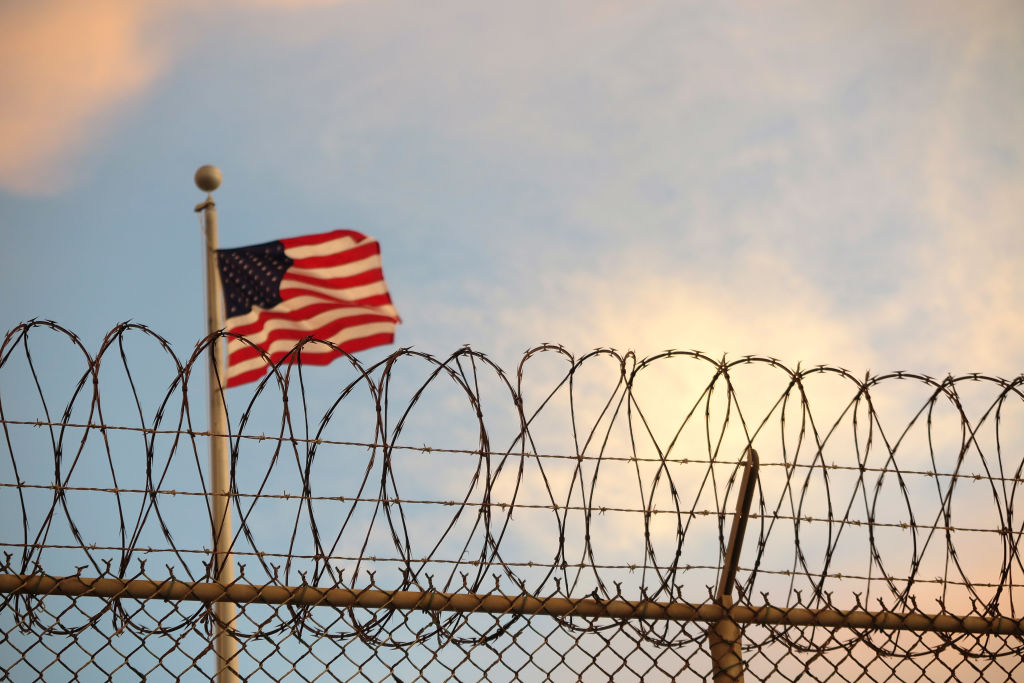
“I’d get up today and do it again,” testified one of the architects of the CIA’s brutal, post-9/11 torture program last month. Torture has once again taken center stage at Guantánamo, and the consequences of our nation’s failure to hold the torturers accountable was on full display.
Psychologist James Mitchell, who contracted with the CIA to design and implement the agency’s torture program, has been testifying in the death penalty proceedings of the men accused of conspiring in the 9/11 attacks. As a lawyer who represented victims and survivors of the CIA torture program in a lawsuit against Mitchell and his partner, Bruce Jessen, I was in Guantánamo to witness Mitchell’s testimony firsthand. I was also there as a representative of the ACLU, which is an official NGO observer of the military commissions. (Other ACLU-affiliated attorneys are on the team representing one of the defendants, Khalid Shaikh Mohammed, but I am not involved in their work.) The grim spectacle of Mitchell on the stand, speaking openly about torturing prisoners and hawking his memoir, vividly illustrates the ongoing failures of accountability for the torture that our government inflicted on prisoners.
Over the course of his testimony, Mitchell freely admitted his role in committing grotesque acts that clearly violate the absolute legal prohibition on torture, secure in his certainty that he will never face criminal charges. He even sought to profit from his disclosures, publishing a memoir and repeatedly urging those in court to purchase copies. Several young servicemembers appear to have taken him up on this offer, as copies of his book proliferated among the courtroom guards as Mitchell’s testimony proceeded.
Torture is a crime. But Mitchell, who testified about assaulting prisoners, pouring water down their throats, starving them, stripping them and threatening to kill a man’s child, isn’t on trial. In fact, the government has never prosecuted a single person for the systematic torture that the CIA and its contractors inflicted. And in the military commissions, the CIA maintains that virtually everyone who participated in torture is entitled to a cover-up of their crimes.
Under the CIA’s absurd secrecy rules, the government wouldn’t even let the names of other participants in the torture program be mentioned in the Guantánamo courtroom. Whenever testimony gets close to the complicity of a person or country in the CIA’s torture program, a red light flashes and white noise floods the public gallery. Everyone must pretend that national security is threatened by a torturer publicly stating well-known truths. Public trials are supposed to be a way of openly arriving at the truth, but the Guantánamo courtroom is a twilight zone where everyone knows basic facts but no one can speak them.
Gina Haspel, the current CIA director, for instance, is widely known to have overseen a CIA torture site in Thailand and supported the destruction of videotapes depicting CIA torture. But for reasons of “national security,” the CIA is permitted to exercise an absolute veto over any description of her complicity in torture.
It is impossible to see how a fair trial is possible under these conditions. The government’s secrecy rules prohibit the defendants from seeing the evidence of their own torture and their lawyers from questioning most of the people involved. Mitchell’s testimony was frequently interrupted by prosecutors demanding that he keep secret even basic information about CIA personnel involved in torture. No ordinary criminal proceeding, much less a death penalty case, can be fairly conducted when the government holds all the cards.
The artificial secrecy the government imposes on discussing CIA torture also constrains the recovery of torture survivors and their families. Health providers at Guantánamo have said that it was their understanding that they were not to ask specifics about the torture their patients endured at the hands of the CIA and cannot even review medical records from the years the men spent in CIA captivity. After torturing a man named Gul Rahman to death more than 17 years ago, the CIA still refuses to inform his grieving family of what it did with his body so that the family may give him a decent burial.
Instead of continuing to cover up the legacy of broken bodies, broken families and broken lives that the CIA left behind, it is essential that the full story of the government’s torture program be brought out. Congress should release the full Senate report on the CIA’s torture program. The release of the executive summary of that report — over the CIA’s objections — has done much to show the brutality and lawlessness of the CIA’s criminal program, but much more remains hidden. The government should come clean to victims and families, including by apologizing to survivors, finally telling Rahman’s family where it hid his body, and providing compensation. And rather than promoting and protecting the people — like Haspel — complicit in torture, the government should honor the public servants who, when our nation went off course, stayed true to our most fundamental ideals and objected to torture.
Until we have meaningful public accountability for the crimes committed in the name of national security, the threat remains that America will, as Mitchell boasted, “do it again.”
More Must-Reads from TIME
- Cybersecurity Experts Are Sounding the Alarm on DOGE
- Meet the 2025 Women of the Year
- The Harsh Truth About Disability Inclusion
- Why Do More Young Adults Have Cancer?
- Colman Domingo Leads With Radical Love
- How to Get Better at Doing Things Alone
- Michelle Zauner Stares Down the Darkness
Contact us at letters@time.com